CANADIAN GOVERNMENT RESPONDS TO CHANGES TO “PRODUCT OF USA” LABELLING REGULATIONS
Canada’s Minister of Agriculture and Agri-Food, the Honourable Marie-Claude Bibeau, and Minister of International Trade, Export Promotion, Small Business and Economic Development, the Honourable Mary Ng, recently released the following joint statement in response to the advance notice of changes that will be formally proposed by the United States to the “Product of USA” voluntary labelling regulations for meat, poultry and egg products.
“The Canada and United States meat and livestock sectors are highly integrated. This collaboration contributes to the growth and resilience of farmers and processors on both sides of the border. It also allows us to ensure a reliable supply of high-quality products.
“Canada remains concerned about any measures that may cause disruptions to the integrated North American livestock supply chains.


“Canada will closely review the proposed amendments to the labelling of meat, poultry and egg products in the U.S. and will participate in the U.S. rule-making process to ensure that these changes conform to the U.S.’ international trade obligations and do not disrupt supply chains.

E-mail:
Website: www.meatbusinesspro.com
Meat
“Canada will also firmly oppose any proposition from the United States to renew a mandatory country of origin labelling system for pork and beef, a practice which the World Trade Organization allowed Canada to take retaliation measures against the United States.
“Canada will work with the U.S. to ensure that new definitions and rules allow farmers, processors and consumers in both countries to continue to benefit from efficient, stable and competitive markets.”

5 meatbusinesspro.com March 2023 MEATBUSINESSPRO
March 2023 Volume 24 Number 3
Business Pro is published 12 times a year by We Communications West Inc
Communications West Inc.
Kenaston Boulevard
MB, Canada R3N 1Z4
Fax: 204.582.9800
Meat
We
106-530
Winnipeg,
Phone: 204.985.9502
Toll Free: 1.800.344.7055
publishing@meatbusiness.ca
subscriptions are
years
Guide issue.
We Communications West Inc. All rights reserved.
contents of this publication may not be reproduced by any means in whole or in part, without prior written consent from the publisher.
in Canada. ISSN 1715-6726
MMUNICATIONS W EST IN C
Business Pro
available for $28.00/year or $46.00/two
and includes the annual Buyers
©2020
The
Printed
CO
DIGITAL MEDIA EDITOR
CONTRIBUTING WRITERS
Cam Patterson, Jack Roberts, Taylor Brown CREATIVE DIRECTOR Patrick Cairns
THE BEEF, PORK
&
POULTRY INDUSTRY DIGITAL MAGAZINE
The North American Meat Institute (Meat Institute) announced recently the U.S. Department of Agriculture’s (USDA) Food Safety and Inspection Service’s (FSIS) latest attempt at proposed rules for a “Product of the USA” label for meat products are again likely to result in trade retaliation from Canada and Mexico costing American consumers and businesses billions of dollars.
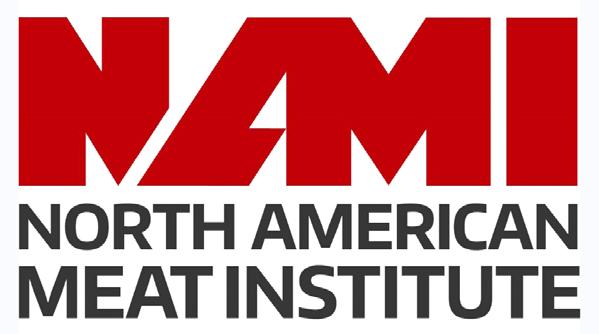

“Unfortunately, this proposed rule is problematic for many reasons. USDA should have considered more than public sentiment on an issue that impacts international trade,” said Meat Institute President and CEO Julie Anna Potts. “Our members make considerable investments to produce beef, pork, lamb, veal and poultry products in American facilities, employing hundreds of thousands of workers in the U.S. and with processes overseen by USDA inspectors. This food should be allowed to be labeled a ‘Product of the USA.’”
At issue is a rule proposed by FSIS that would limit claims so only products made from livestock born, raised, harvested, and processed in America could be labeled a “Product of the USA.”


Although the proposed label is voluntary, this overly prescriptive definition would exclude many popular products made in America, by workers in America, and under inspection from the USDA. Those products include certain brands of popular American foods like hot dogs, sausage, bacon, ground beef, sliced ham and much, much more.

The proposed voluntary “Product of the USA” label will have a discriminatory effect, causing meat packers and processors, who wish to make the claim, to segregate cattle, hogs, and meat from other nations.
This rule uses the same standard as the mandatory Country of Origin Labeling (COOL) statute repealed by Congress in late 2015.
Congress repealed COOL because Canada and Mexico challenged COOL as a nontariff trade barrier. The U.S. government lost four times before the World Trade Organization (WTO) and the WTO authorized Canada and Mexico to retaliate and levy more than $1 billion in tariffs on goods ranging from meat to wine, chocolate, jewelry and furniture.
6 MEATBUSINESSPRO March 2023 meatbusinesspro.com
NEW LABEL PROPOSAL FOR MEAT AND POULTRY WILL RAISE PRICES FOR CONSUMERS
Importantly, the proposed “Product of the USA” rule would be broader than mandatory COOL because it also includes processed products and products intended for foodservice, which were not subject to mandatory COOL.

Canada and Mexico still retain that authorization and could initiate retaliation with no further action by the WTO.
In addition to increasing the price of meat and poultry and other goods for consumers, the proposed rule is also problematic because:
• It conflicts with federal law: see The Federal Meat Inspection Act and The Tariff Act;

• It will place additional duties on FSIS, which is already overburdened and understaffed.

• It is a significant change from FSIS’ stated intention provided just three years ago when the agency denied a United States Cattlemen’s Association petition on the label and said it planned to initiate rulemaking to: “limit ‘Product of USA’ and certain other voluntary U.S. origin statements to meat products derived from livestock that were slaughtered and processed in the United States.”

7 meatbusinesspro.com March 2023 MEATBUSINESSPRO
VEMAG REPLACEMENT PARTS https://www.dhenryandsons.com
FAQ
WHAT IS CURRENT LAW?
Products made in meat and poultry facilities in America, by workers in America, inspected by the U.S. Department of Agriculture (USDA) and bearing the USDA mark of inspection may be labeled “Product of the USA.”
An imported product may be considered a domestic product if it undergoes a “substantial transformation” commonly defined as a change in the product’s name, character, or use that results in a new and different article of commerce. For example: a steer walks into a meat packing facility and after harvesting and processing – the ultimate in “substantial transformation” – is packaged as boxed beef for foodservice, retail sale or export.
Is this proposed “Product of the USA” rule similar to the mandatory Country of Origin Labeling (COOL) rules repealed by Congress in 2015?
Yes. Although this proposed “Product of USA” rule is voluntary, it would impose the same standard as the mandatory Country of Origin Labeling statute repealed by Congress in late 2015.
Importantly, the proposed rule would be broader than mandatory COOL because it also includes processed products and products for foodservice, which were not subject to mandatory COOL.
WHY DID CONGRESS REPEAL THE COOL STATUTE?
Canada and Mexico challenged COOL as a nontariff trade barrier and from 2009-2015 the United States government fought to preserve the law. But the U.S. government lost four appeals before the World Trade Organization (WTO) and the WTO authorized Canada and Mexico to retaliate and levy more than $1 billion in tariffs on goods ranging from meat to wine, chocolate, jewelry and furniture. Congress stepped in and repealed COOL in the Consolidated Appropriations Act of 2016. Then-USDA Secretary Tom Vilsack was forced to stop enforcement of COOL for beef and pork, bringing the U.S. into compliance with the WTO’s ruling and avoiding a trade war.
WILL THE PROPOSED RULE AVOID $1 BILLION IN RETALIATORY TARIFFS FROM CANADA AND MEXICO?
No. The proposed “Product of the USA” rule does not consider the integrated nature of the North American meat and poultry industry. Livestock and meat products from Canada and Mexico are shipped, tariff-free, across the border for slaughter and processing in the United States. Likewise, meat products are shipped from the United States to Canada and Mexico. This integrated competitive market allows for more affordable beef and pork for American consumers.
Although the proposed “Product of the USA” policy is voluntary it would require meat packers and processors who wish to make the claim to segregate cattle, hogs, and meat from other nations. This segregation was the basis for the WTO finding and is what allows Canada and Mexico to levy tariffs on American goods.

WHAT DOES THIS MEAN FOR CONSUMERS?
Consumers will pay more for meat and poultry products and any goods Canada and Mexico target in their retaliation.

WHO BENEFITS FROM THE CHANGE TO “PRODUCT OF THE USA” LABELING RULES?
No economic data supports the proposed rule.
A review of COOL conducted by USDA in 2015, during USDA Secretary Tom Vilsack’s prior tenure in the Obama Administration, concluded:
• while there is evidence indicating consumer interest in COOL information, the evidence does not support a conclusion that COOL significantly increases consumer demand.
• livestock producers face costs for implementing COOL even though cattle and hogs (as opposed to retail beef and pork) are not COOL covered commodities.
Continued on page 10
8 MEATBUSINESSPRO March 2023 meatbusinesspro.com
https://www.beaconmetals.com

These key findings, both a failure to increase consumer demand and producers incurring additional costs, apply whether the labeling is mandatory or voluntary.
And there is no evidence that the situation has changed since USDA’s last analysis.
In fact, consumer demand for meat and poultry is consistently high. According to a consumer study of retail sales called “The Power of Meat” conducted by Anne-Marie Roerink of 210 Analytics, in 2021, nearly all American households, 98.5%, bought meat.
It is noteworthy that mandatory COOL was in place from 2009 to 2015; during that time per capita beef consumption declined 11.5 percent, and per capita pork consumption hit its lowest point since 1976. In 2016 alone, the first year after COOL was repealed, per capita beef consumption grew 5% and per capita pork consumption grew 2%.
HOW MUCH MEAT AND POULTRY IS IMPORTED FROM MEXICO AND CANADA?
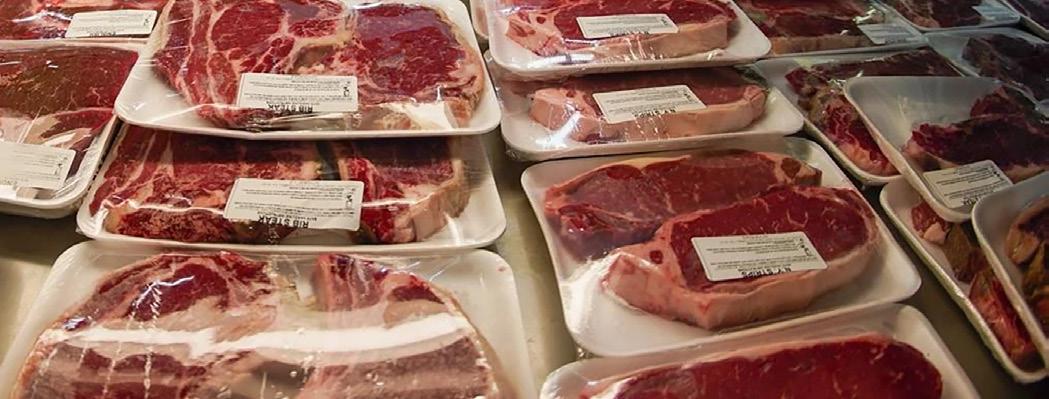
The U.S. exports more meat and poultry to Mexico and Canada than is imported from those nations.
On average, the U.S. exports 13-15% of its total beef production, whereas annual beef imports represent 8-12% of domestic production. The highly-integrated nature of the North American meat and livestock industry ensures the U.S. can maintain its high-quality, abundant beef supply to satisfy increasing domestic demand, while also meeting the industry’s trade commitments. For example, the significant volume of variety meats sent to Mexico returns value to U.S. producers and reduces food waste by ensuring parts of the animal not commonly consumed in the U.S. have access to a viable export market, where demand for such cuts and products is high.
Mexico is the largest market for pork, by both volume and value, with 2022 U.S. pork and pork variety meat exports to the country exceeding $2.04 billion. Canada is the U.S.’s fourth largest pork export market. In 2022, U.S. pork exports to Canada surpassed $866 million. U.S. imports of Canadian pork reached $1.4 billion in 2022, and pork imports from Mexico were just shy of $190 million.
Mexico is the top poultry export market, whereas Canada is the third largest poultry export market. In 2022, the US imported $512,666 in poultry from Canada and just $20,859 from Mexico.
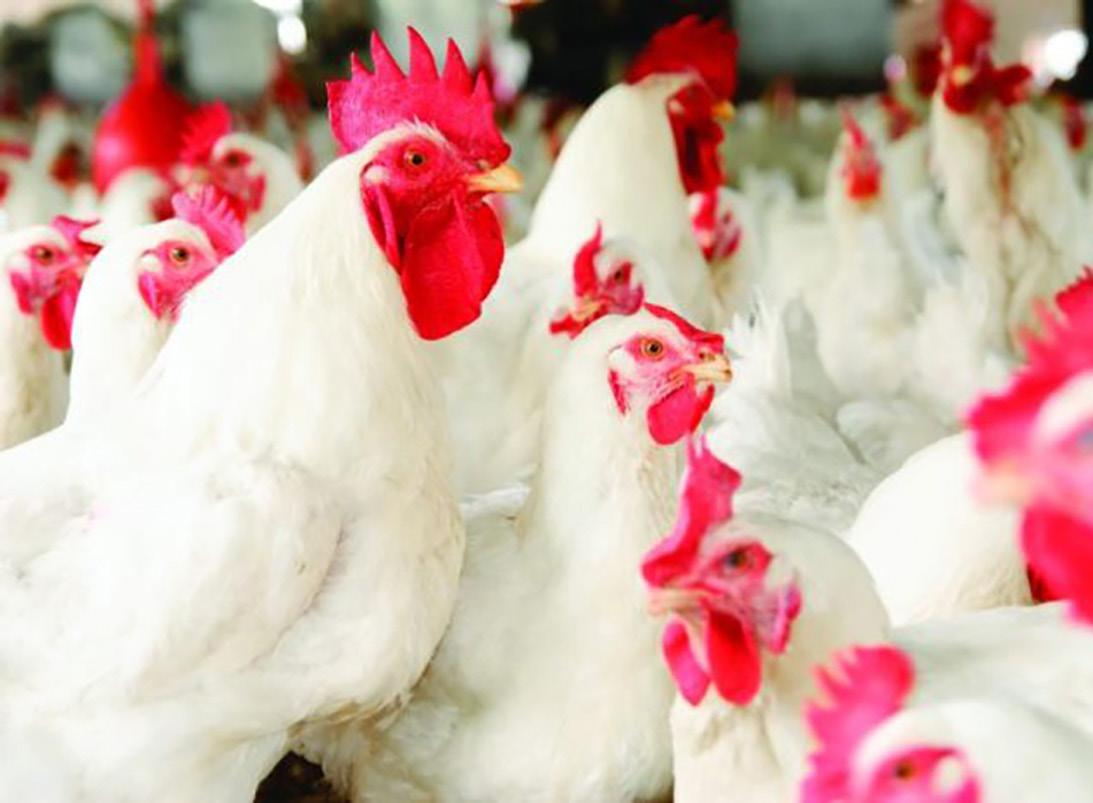
WHY IS FSIS PROPOSING THE NEW DEFINITION OF “PRODUCT OF THE USA”?
Citing consumer confusion, USDA conducted a consumer sentiment study about the “Product of the USA” label.
Consumer opinion and transparency is important to the meat and poultry industry. However, there is no evidence this rule will increase already high consumer demand for meat and poultry products.
In fact, Kansas State University Professor Glynn Tonsor’s Meat Demand Monitor for April, 2020 found country of origin was 11th out of 12 consumer considerations when making purchasing decisions. Taste, freshness, safety, price, nutrition, health, appearance, convenience, hormone/antibiotic free and animal welfare were all more important to consumers than where the animal was born.
WILL THE NEW “PRODUCT OF USA” RULES HELP LIVESTOCK PRODUCERS?
No. Although supporters of COOL and the proposed “Product of USA” rule like to claim that mandatory COOL increased prices beef producers received in the years leading to the repeal in 2015, this assertion ignores basic supply and demand fundamentals. In 2015, cattle prices saw record highs because there was a limited supply of cattle to harvest increasing demand. And today, without COOL, cattle prices are again approaching record highs, also due to supply and demand.
These key findings, both a failure to increase consumer demand and producers incurring additional costs, apply whether the labeling is mandatory or voluntary.
10 MEATBUSINESSPRO March 2023 meatbusinesspro.com

Americans are buying more fresh meat than before the COVID-19 pandemic and are seeking value in terms of price, convenience and better-for attributes in meat purchases, according to the 18th annual Power of Meat report recently released by the Meat Institute and The Food Industry Association (FMI).





Self-described “meat eaters” comprise 78% of Americans, compared to just 7% who describe themselves as vegan or vegetarian. Shoppers spend more than $15 in the meat department per trip and average nearly one trip to the meat department per week (up nearly 5% since 2019). While 50% of shoppers get their meat from a supermarket, many turn to supercenters (35%), club stores (4%) and hard discounters (5%) for their meat purchases.
Despite rising food and beverage prices over the past year, consumers did not significantly change the amount of meat they buy (down just 2.5% by volume compared to 2021). Product quality and appearance continue to be the top factors driving meat purchase decisions, followed by price per pound and total package price.
To save money, a large majority of consumers (76%) report they made changes to the amount, type, cut, and/or brand of meat they purchase or changed where they shop. Consumers’ top strategies to save money include: buying only the amount needed (42%), looking for coupons (35%), and stocking up when meat is on sale (35%). Seventeen percent said they buy less meat with organic, grass-fed, or other claims. Only 16% of meat shoppers said they cook more meatless meals to save money. Of the 33% of Americans who said they are looking to eat less meat or chicken, 52% cite cost as the reason (up from 16% in 2020).
“Meat continues to meet the needs of American families, across a wide range of priorities and preferences,” said Julie Anna Potts, President and CEO of the Meat Institute. “Shoppers count on meat for quality, taste, convenience, and value, and the meat sector is taking action through the Protein PACT to ensure they can feel confident about doing so for generations to come.”
12 MEATBUSINESSPRO March 2023 meatbusinesspro.com
18TH ANNUAL POWER OF MEAT REPORT MEAT PURCHASES RISE ABOVE PRE-PANDEMIC LEVELS, CONSUMERS LOOK FOR VALUE
“For example, shoppers concerned about food prices might opt to splurge on an at-home date-night meal. Food retailers can best serve today’s shoppers by emphasizing value-added meat options and catering to shoppers with meal solutions.”
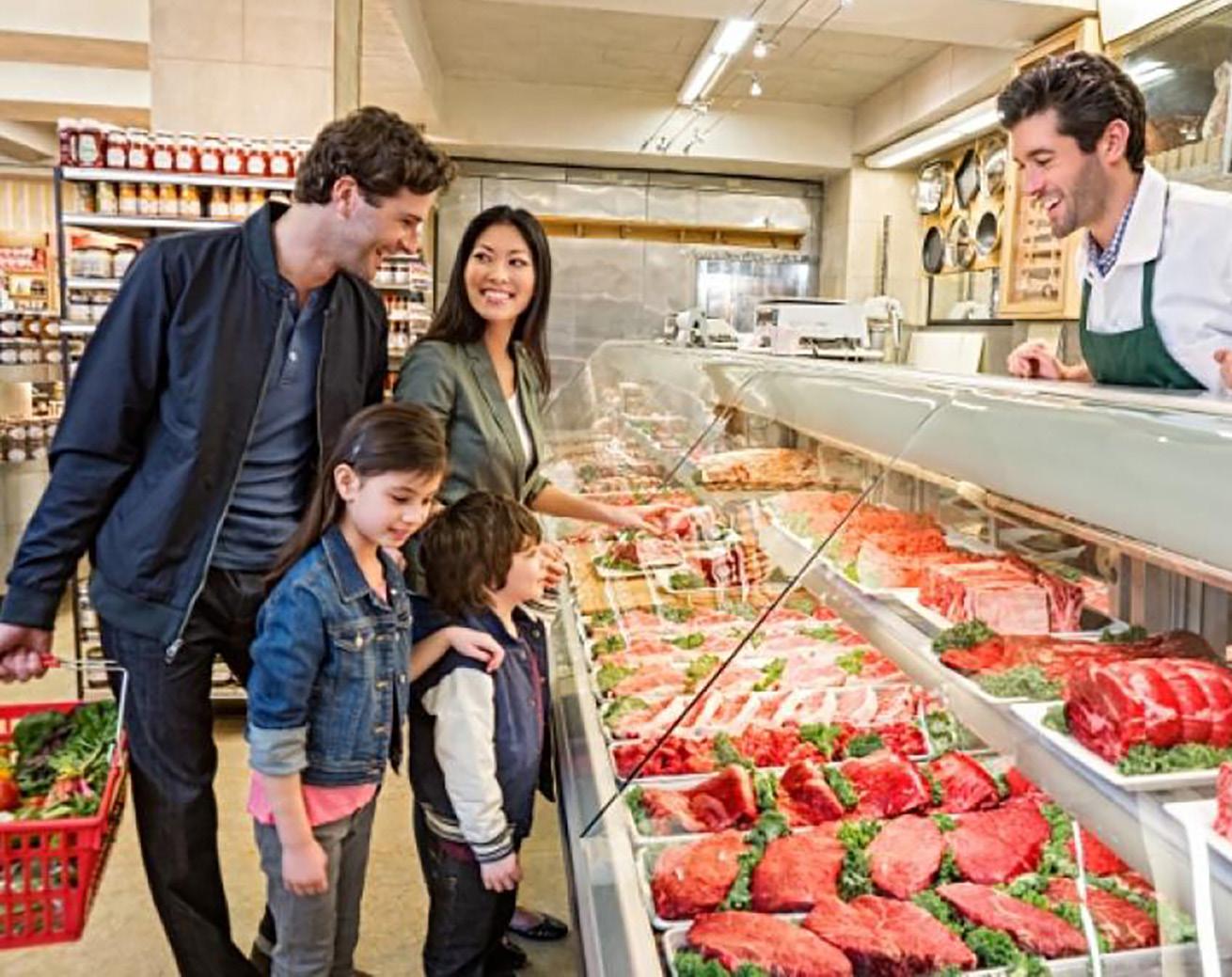
THE BEST DEFENSE A STRONG OFFENSE PROMOTING
At the turn of the millennium, the production facilities of the F&P division had been completely redeveloped in the Aspach industrial estate in town of Biberach, Upper Swabia. Following extensions in production and administration and the construction of a new customer and technology centre in 2010, a second customer forum for bakery applications was built in 2014 and a state-of-the-art logistics centre in 2017. Completion of the new assembly hall is expected by the end of 2023.
THE HEALTH BENEFITS
By Ronnie P. Cons
Red meat is often wrongly portrayed as being unhealthy. some in the media as unhealthy or not environmentally friendly.
SUBSTANTIAL INVESTMENT IN NEW JOBS
Vegan, fish and other non-meat diets have been proposed as healthier alternatives. The result of this onslaught of negative meat messages has influenced many families to cut back on their meat and poultry purchases. Perceptions may reality but truth trumps misinformation. Parents and other consumers want what is best for their health and that of their families. They are also aware that a lot of false information is out there and as such, are open to scientific facts that can correct their misconceptions.
liver, 625 spinach.
Iron found found in absorption.
This provides an opportunity for retail meat departments to implement an instore ‘Healthy Meat Facts’ nutritional campaign to set the record straight and convince their customers that meat and poultry are actually good for one’s health and that they should increase rather than decrease their purchases of it. The campaign outlined below can have a direct impact on sales:
The expansion of production capacities also brings new, attractive jobs in modern takt time production to Biberach. “We want to be an attractive employer, offering our employees the best working conditions,” said Markus Handtmann. “This new construction puts us in a position to further develop the division successfully and with lasting effect.” Further recruitment is planned for the coming years, not only at the Biberach location, but worldwide, as Harald Suchanka added, “On an international level, we are also strengthening our workforce in the markets we serve directly through our sales companies. The F&P division has meanwhile grown to around 1,500 employees with a strong upwards trend.”
Start by displaying instore posters promoting the nutritional value of meat. They should be innovative, eye catching and be designed to specifically contradict any meat myths. The comments should all be literature based quoting research papers or MDs for maximum effect. Various posters should be made - each with a brief but powerful message covering one theme.
Posters can convey the following healthy meat fact messages:
1. Let’s IRON out the Truth on Meat!
“You would need to eat a massive amount of spinach to equal (the iron content) in a steak,” says Christopher Golden, an ecologist and epidemiologist at Harvard University in Cambridge, Massachusetts. (As quoted by nature.com in the article ‘Brain food- clever eating’.)
For a woman to receive her recommended daily intake of 18 mg of iron, she would need just 300 grams of cooked bovine
2. Eat Meat Being deficient linked with Dr. Charlotte California, Zinc is preserves
3. Boost Due to antibodies chronic
4. Power The protein Muscles building The protein growth
5. Meat Meat contains body cannot isoleucine, threonine, protein.
6. Eat Meat Meat contains production functioning Say ‘hello’ acid, vitamin The line only apply meat health Facts’ nutritional and poultry. education
Ronnie P. meat and
https://www.mmequip.com

15 meatbusinesspro.com March 2023 MEATBUSINESSPRO
22 CANADIAN MEAT BUSINESS September/October 2017
FAMILY-OWNED BUSINESS GIVES PRIORITY TO SUSTAINABLE BUILDING
Sustainable action is firmly anchored as a corporate value at Handtmann and receives appropriate consideration when it comes to construction measures. In addition to the installation of a photovoltaic system and extensive green roofs, investments will again be made in the expansion of the utility infrastructure. Inhouse use of the solar power generated will be boosted by an integrated medium voltage network within the group of companies, just as the waste heat from the production process will be used to heat all of the group’s properties via an integrated heat network. This reduces the use of fossil primary energy and thus the company’s carbon footprint.
About Handtmann Filling and Portioning Systems (F&P)


The Handtmann F&P division forms part of the owner-managed Handtmann Group of Companies based in the southern German town of Biberach. This division constitutes a leading manufacturer of process technology for food processing and offers modular, integrative line solutions from product preparation all the way through to the packaging solution. The range of products is flanked by process-supporting digital solutions developed in-house. At the same time, investments are being made in sustainable food innovation concepts, which also includes the stateof-the-art technology and customer centres at the company headquarters. The Handtmann Group employs around 4,100 people worldwide, of which 1,500 in the F&P division. The company is represented in over 100 countries around the world with numerous subsidiaries and sales and service partners, and also operates a comprehensive network of strategic partnerships. www.handtmann.com/food

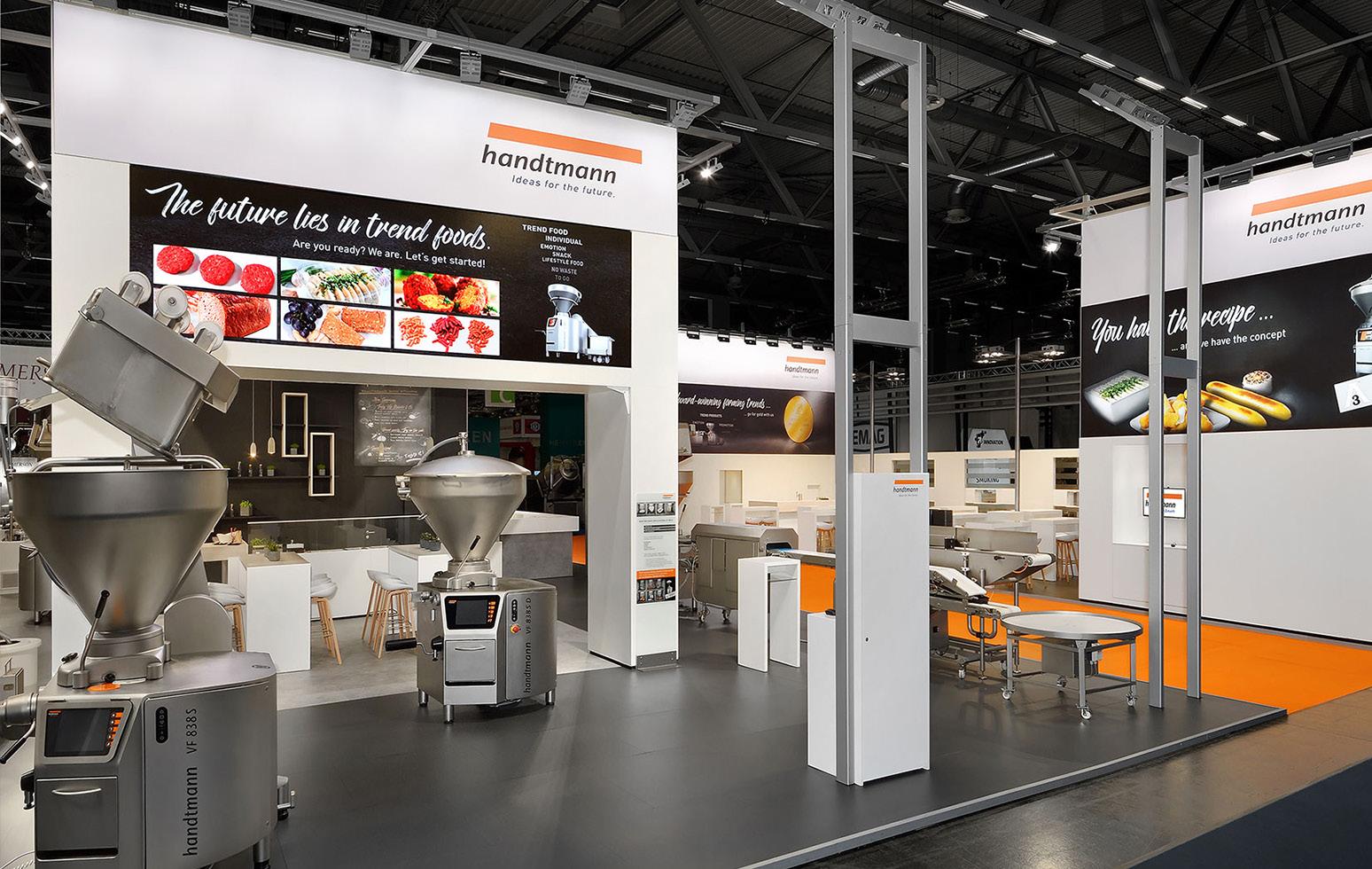
16 MEATBUSINESSPRO March 2023 meatbusinesspro.com

https://www.cfib.ca
Meat is a new addition to the report this year and had a high rate of compliance.

As part of its food fraud initiative, during fiscal year 2021 to 2022, the Canadian Food Inspection Agency (CFIA) conducted a number of activities to prevent, detect and deter food fraud.


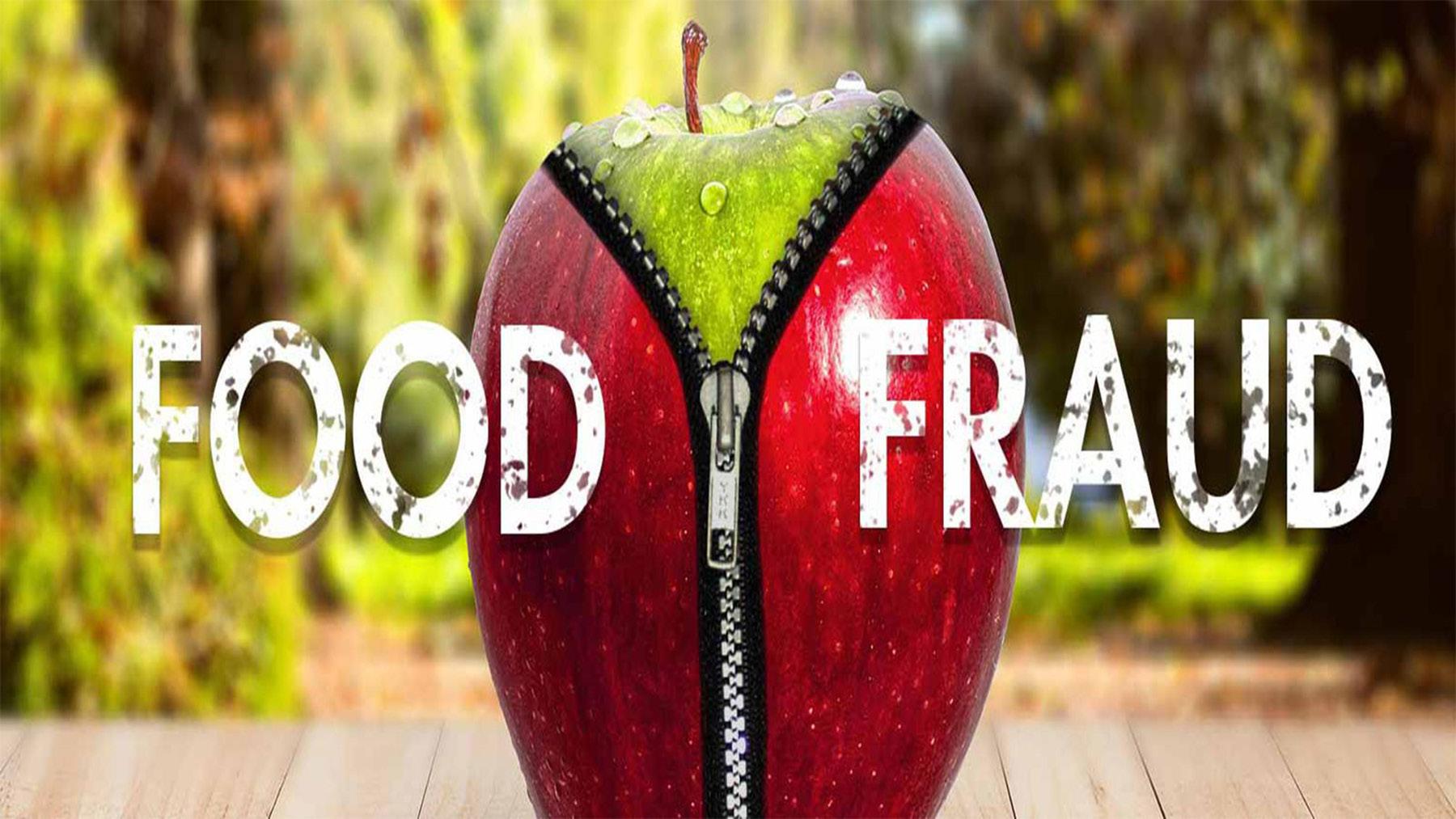
When potential food fraud was discovered, the CFIA took action, preventing more than 100,000 kg of misrepresented food from being sold in Canada. These actions include destroying, relabelling or removing products from Canada.
Meat is a new addition to the report this year and had a high rate of compliance. The findings for the rest of the commodities are consistent with last year's report, showing that the CFIA's efforts to protect consumers and the food industry from food fraud continue to be effective. This annual testing not only helps the agency address existing risks, it is also used to plan future sampling and inspection strategies to better target areas of high risk.
Surveillance during this period included inspecting, sampling and testing for authenticity and misrepresentation of fish, honey, meat, oils and spices.
CFIA collected 844 targeted samples to detect specific types of misrepresentation. The following percentages of analyzed samples were found to be satisfactory:
• Fish 92.7%
• Honey 77.5%
• Meat 99.1%
• Olive oil 86.9%
• Other expensive oils 64.3%
• Spices 90.8%
18 MEATBUSINESSPRO March 2023 meatbusinesspro.com
TO 2022
CFIA: FOOD FRAUD ANNUAL REPORT 2021
The testing results summarized are not representative of overall compliance rates within the Canadian marketplace because this sampling targeted products at higher risk for non-compliance. Such targeting can result in figures that appear unusually high within the context of the overall marketplace.
is false or misleading, but such misrepresentation may still occur. This may impact buyers because they would not be receiving what they expect to be buying. It can also pose health risks if, for example, allergens or nonpermitted ingredients are added to food products but not declared.
Addressing food fraud supports consumer confidence that food purchased in Canada is accurately represented and safe to consume. It also helps Canadian businesses compete more fairly in the Canadian and global marketplace.
NEW SURREY SLAUGHTERHOUSE ‘WOULD OPEN DOOR’ TO NEW BEEF MARKETS
Where CFIA found non-compliance, it took control actions and enforcement actions where warranted, guided by the Standard Regulatory Response Process. These actions included removing products from Canada, detention, destruction, or relabelling.
Proposed 30,000-square-foot beef abattoir in Cloverdale would be B.C.’s largest such facility
By Amy Reid, Peace Arch News
A federally licensed beef processing facility is in the works in Surrey, BC.
INTRODUCTION
“There’s a new building coming forward, a new abattoir, I think that’s the French pronunciation of slaughterhouse,” said Councillor Mike Starchuk. “So Surrey will have a newer facility with a better capacity so people will have the ability to not have to ship an animal to Alberta to have it processed. The applications have gone through the Agricultural and Food Sustainability Advisory Committee.”
Food fraud is a priority under the Food Policy for Canada. As part of this initiative, the CFIA is addressing food misrepresentation through strategies to prevent, detect and deter food fraud that falls within its mandate. Health Canada works with CFIA on this initiative as well.

The facility is proposed on a 25-acre property within the Agricultural Land Reserve at 5175 184th St. The planned 30,000-square foot abattoir in Cloverdale would process up to 100 head of cattle per day.
Food fraud may occur when food is misrepresented and is an emerging issue around the world. In Canada, it is generally prohibited to sell food in a manner that

According to a city report, that would make it larger than any other processing facility in B.C.. But it would still be small by industry standards, compared to the largest meat processing plants in Alberta that process 3,000 heads of cattle per day.
The proposed facility would be fully enclosed and designed
so as to not emit odours. And while there is an operational 6,000-square-foot abattoir on the property now, it’s can only process a limited number of cattle.
PREVENT
Chris Les is general manager of Meadow Valley Meats, the company behind the project. Meadow Valley Meats is seeking a Canadian Food Inspection Agency license for the proposed abattoir, to become a federally registered meat establishment and expand the operation. This would allow the meat products to be transported beyond B.C.’s boundaries.
Prevention means proactively taking measures to avoid the misrepresentation of food that is sold in Canada or exported from Canada. Such measures include:
• Maintaining regulatory requirements
• Providing guidance
• Planning risk control measures
• Engaging with stakeholders to promote compliance and raise awareness
“Our focus is on trying to bring a more efficient, sustainable local product to the market, realizing we can do that now in a very limited sense,” said Les. “I caution people when talking to them and they say, ‘What a big plant, that’s going to go allow you to go mainstream.’ Well, yes, if you look in the context of B.C., but this is still a very niche plant and we’ll serve a niche industry for producers and for the market. It’s certainly not going to be a monstrosity of a plant but it’ll be a big upgrade from the site currently.”
Continued on page 32
https://www.tcextrade.com

19 meatbusinesspro.com March 2023 MEATBUSINESSPRO
ACTS AND REGULATIONS
Legislative requirements are the foundation of preventive measures that protect Canadians from food safety and misrepresentation risks. Canada is a leader in safe and reputable food, and its regulatory framework is highly regarded internationally.

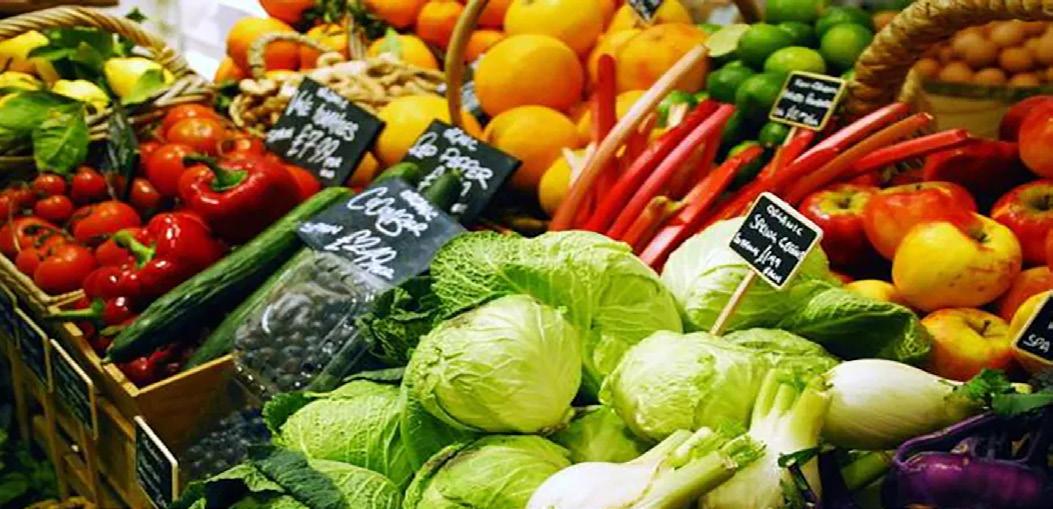
CFIA enforces these laws and works to protect consumers from food fraud. Prohibitions against deceptive practices and misrepresentation apply to food at all levels of trade in Canada.
Additional provisions support this legislation, such as labelling requirements and compositional standards for a number of commodities. Regulated parties are ultimately responsible for complying with regulatory requirements.
PROMOTING AWARENESS
CFIA actively raises awareness about food fraud in Canada.
The campaign, which targeted consumers in Canada responsible for purchasing food for their household, yielded more than 3.7 million impressions.
The online ads directed the audience to a campaign web page providing information about what food fraud is, how food fraud impacts consumers, and where to report a food complaint or concern. The page also highlighted CFIA's role and industry's role in preventing food fraud in Canada. During the time period covered by this report, the CFIA's food fraud web pages received more than 25,000 views.
CFIA's social media channels share information to build awareness about food fraud. CFIA's social media posts on food fraud received 34,348 impressions and 651 engagements.
RISK INTELLIGENCE, ANALYSIS AND PROGRAM DESIGN
CFIA conducts a variety of activities to monitor, analyze and track food fraud events reported domestically and globally. CFIA produces monthly environmental scanning reports and monitors various sources of information to gain situational awareness of Canadian and global food fraud events. These sources are reported in open media and gathered from publicly available information provided by foreign competent authorities.
This intelligence gathering contributes to foresight and to identifying emerging risks.
In 2021 to 2022, as in previous years, CFIA used this information to plan activities to prevent, detect and deter food misrepresentation in Canada. In addition to these proactive efforts, CFIA also does responsive work such as acting upon and following up on complaints or reported incidents.
Media outreach helped increase awareness of food fraud in Canada. A video, three articles, and a radio spot were released in March 2022, aimed at informing Canadian consumers about the impact of food fraud, as well as what they can do if they suspect their food is mislabelled or misrepresented. These communication products were picked up by more than 80 media outlets with a collective reach of approximately 9.7 million people.
COMPLIANCE PROMOTION
A variety of compliance promotion products related to the acts and regulations that are administered and enforced by the CFIA are available to help industry understand and follow requirements that apply to them. These include the industry labelling tool, traceability interactive tool, the Automated Import Reference System, and industry guidance for combatting food fraud.
20 MEATBUSINESSPRO March 2023 meatbusinesspro.com
COLLABORATION & ENGAGEMENT
To improve its ability to address food fraud, CFIA works with stakeholders such as consumers, industry, domestic and international organizations, as well as foreign competent authorities similar to CFIA. This engagement plays an important role in prevention.
DF: I don’t think being on the island has really impacted us negatively one way or the other. We’ve traveled a lot, met a lot of other farmers and livestock producers in other parts of Canada, and we all seem to have the same issues and same concerns.
CMB: I understand that your farm was the first in Atlantic Canada to be involved in the TESA program.
CONSUMERS
DF: Yes, I think we were the first farm east of Ontario as far as I understand. I’m not sure why the eastern associations wouldn’t have previously nominated anybody because there are many farms here on PEI doing every bit as much as we are as to attain a high level of sustainability. Anyway, we were very surprised when the PEI Cattleman’s Association nominated our farm.
CFIA conducted public opinion research in 2021 to 2022, surveying 1000 Canadians and holding 10 online focus groups with a mix of consumers. Of those surveyed, more than a quarter of respondents reported being aware of food fraud. After hearing about food fraud, the majority of respondents were interested in finding out more, including how it affects them.
CMB: And then you were attending the Canadian Beef conference in Calgary and you won.
INDUSTRY AND ACADEMIA
DF: Yeah! That was a very nice moment for us. But I don’t like to use the word win actually. However, being recognized for our commitment was a real honour. If you want to know the truth, it was a pretty humbling experience. As I said to CBC when they phoned me after the conference, I was just floored, really couldn’t believe it.
CFIA promotes compliance with food regulatory requirements by actively engaging with industry stakeholders, associations and regulated parties. In 2021 to 2022, CFIA engaged with a number of industry associations about what it is doing to prevent food fraud, industry's role in that, and areas for collaboration.
CMB: So now that you have been recognized, do you think that will draw more attention and garner more nominations out of Atlantic Canada going forward?
This included meeting with associations representing various sectors such as:
• Canadian Health Food Association – webinar
• Canadian Honey Council
• Canadian Meat Council
• Canadian Spice Association
• Canadian Supply Chain Food Safety Coalition

• Fisheries Council of Canada
• Food, Health and Consumer Products of Canada

• Food Processors of Canada
DF: Absolutely. We’ve gotten a lot of good press highlighting the island cattle industry. I’m positive you’ll see more farms in our neck of the woods nominated next year. And I have to give the Canadian Cattleman’s Association recognition for choosing a farm from Prince Edward Island. We are small players in the national beef industry and I think it was a real credit to their organization to recognize us. They treated all the nominees royally and it was a real class act. It was a wonderful experience.
• Retail Council of Canada
https://www.yesgroiup.ca
21 meatbusinesspro.com March 2023 MEATBUSINESSPRO
September/October 2017 CANADIAN MEAT BUSINESS 17 meatbusiness.ca
FEDERAL GOVERNMENT
Health Canada supports CFIA by addressing health and safety risks that result from food misrepresentation. In addition to providing health risk assessments and scientific advice, Health Canada also conducts environmental scanning to gather data on existing and emerging potential health risks relating to food fraud, and shares these with CFIA to inform risk management approaches. These activities are funded by the investment under the Food Policy for Canada.
CFIA works with the Canada Border Services Agency (CBSA) to address products that are improperly declared and misrepresented. CBSA shares intelligence and information on commodities imported into Canada. The CFIA uses incoming shipment data shared through an electronic interface with the CBSA, as well as CFIA's own internal tools and expertise, to screen and identify shipments going to higher risk importers. This helps CFIA prioritize where to focus its efforts
Along with many other countries, CFIA participated in INTERPOL's (International Criminal Police Organization) Operation OPSON XI. OPSON is an annual operation that aims to remove counterfeit and substandard food and drinks from the marketplace.
CFIA also led Canada's participation in the Codex Committee on Food Import and Export Inspection and Certification Systems working group dedicated to food fraud. The objective of this working group is to develop new international guidance for authorities and industry on preventing and controlling food fraud, in order to protect the health of consumers and support fair practices in the food trade. This year, Canada provided significant technical input on the first draft of this new guidance document.
DETECT
Detection is the active determination of food fraud occurring. CFIA detects food fraud through activities such as inspecting, reviewing documentation and records, sampling and testing.
METHODOLOGY RESEARCH AND DEVELOPMENT
To keep pace with evolving scientific techniques and the abilities of non-compliant regulated parties to evade detection of food fraud, CFIA and Health Canada are developing new analytical methods to detect food fraud and product misrepresentation. They are also improving current methods.
INTERNATIONAL
CFIA continues to work closely with international groups to improve its ability to address food fraud. Such groups include many foreign competent authorities (that is, regulatory bodies similar to the CFIA) and internationally recognized organizations. This engagement plays an important role in prevention.

CFIA implemented a pilot project to engage the Food and Agriculture Organization (FAO), the World Health Organization (WHO) and International Food Safety Authorities Network (INFOSAN) members in the area of food fraud and food authenticity risks. The purpose was to inform best practices in setting risk management priorities and communications.
Each year, CFIA identifies gaps in available techniques to detect food fraud, often related to emerging issues, and develops research needs and priorities. In the period covered by this report, research was undertaken form meat speciation; enhancing the ability to identify and quantify meat species adulteration/ substitution in cooked and uncooked products using a deoxyribonucleic acid (DNA) based analytical protocol

22 MEATBUSINESSPRO March 2023 meatbusinesspro.com
SURVEILLANCE: INSPECTION, SAMPLING, TESTING, AND RESULTS
Misrepresentation deceives consumers and creates an unfair playing field for businesses that comply with regulatory requirements. CFIA inspects, samples and tests commodities that may be susceptible to being misrepresented. This work to detect potential food fraud is called surveillance.

The test results summarized in this report are for sampling that is targeted at areas of higher risk and are not representative of overall compliance rates within the Canadian marketplace. Risk factors include history of non-compliance, unusual trading patterns and gaps in preventive controls.
In 2021 to 2022, CFIA conducted surveillance to detect the following types of misrepresentation:
• Fish species substitution (when higher value species are replaced with less expensive species)
• Adulteration of honey with added sugars
• Substitution of meat species, typically with lesser value species than what is declared


• Adulteration of olive oil with cheaper oils
• Substitution or dilution of other expensive oils with lower value oils
• Adulteration or dilution of single ingredient ground spices by addition of bulking agents, dyes and other unpermitted ingredients
DETER
Deterrence is mitigating a detected non-compliance through enforcement action, as well as deterring future non-compliance, such as by publishing the results of enforcement activities.
ENFORCEMENT
Regulated parties are reminded of their obligations to comply with regulatory requirements. In cases of non-compliance, enforcement actions are guided by
the Standard Regulatory Response Process and are considered on a case-by-case basis. They take into consideration the harm caused by the non-compliance, the compliance history of the regulated party and whether there is intent to violate federal requirements.
When a CFIA inspector determines that a regulated party is in non-compliance with requirements enforced by the CFIA, the inspector has the authority to seize or detain the non-compliant food product and, if the product is not brought into compliance, request that the regulated party dispose of the product, or if imported, remove the product from Canada. In addition, enforcement measures such as Administrative Monetary Penalties (AMPs), suspension or cancellation of licenses, registrations, permits or certifications and recommendation for prosecution could be used. Continuing its commitment to openness and transparency, as well as to deter non-compliance, CFIA publishes the outcome of a number of compliance and enforcement activities, including those related to misrepresentation.
NEXT STEPS
The results of the sampling and testing outlined in this report will be used to inform future efforts to prevent, detect and deter food fraud such as improved risk-based program design, surveillance activities, compliance promotion and enhanced enforcement. The 2022 to 2023 Departmental Plan outlines the CFIA's plan for combatting food fraud for the next year.
CFIA is committed to continuous improvement as it continues its risk-informed activities to protect consumers from misrepresentation and contribute to a fair marketplace. Combatting food fraud in Canada is a shared role of government, industry and consumers. Blockchain technology continues to gain traction in both primary production and food processing. And although primarily seen as an effective way to trace, track and proof products, blockchain systems may also be helpful in the development of more effective artificial intelligence farm and food systems.
23 meatbusinesspro.com March 2023 MEATBUSINESSPRO
3 USES FOR BLOCKCHAIN TECHNOLOGY IN FOOD PROCESSING

Blockchain technology is a system of transparent record-keeping. When a piece of information, or block, gets entered into the chain of records, other computers on the system are notified. Falsifying information is very difficult because any change in information is open for all to see.
“Blockchain really is just a secure, electronic ledger,” explains Peter Gredig, a technology analyst and farmer from Southwestern Ontario.
Many agricultural and food processing companies have implemented digitized systems where information from every step of the production process — from farm to transportation to retail and consumer — is captured with a blockchain system. With such extensive tracking systems, the sources responsible for problems in the supply chain can be found in seconds rather than weeks.
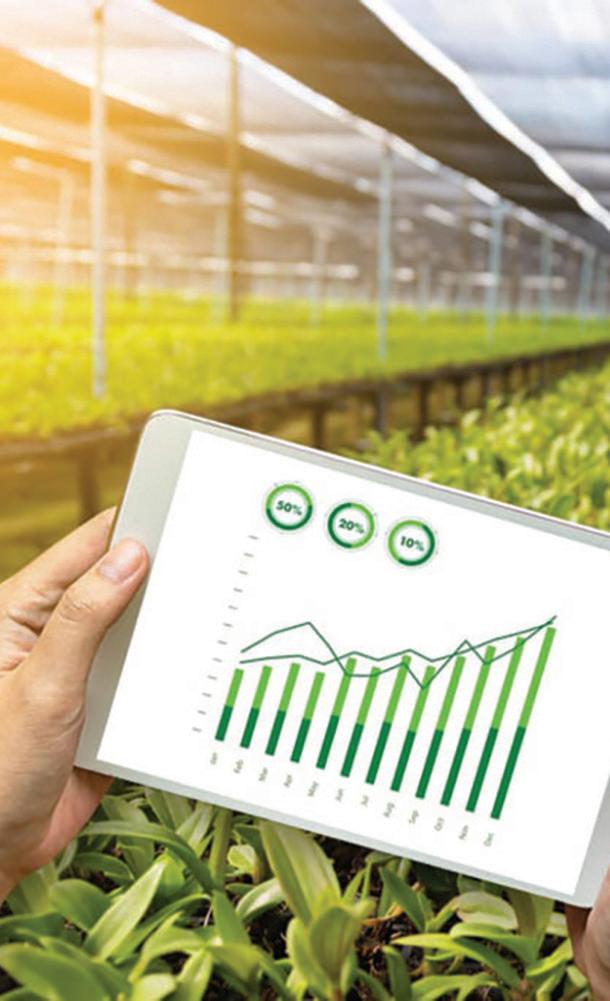

24 MEATBUSINESSPRO March 2023 meatbusinesspro.com
HERE ARE THREE POSSIBLE FUTURE USES FOR BLOCKCHAIN:
1. TRACKING FOOD FRAUD
In addition to food safety, blockchain can potentially reduce food fraud. Was that food product really produced organically? Is beef really the only meat in that hamburger? With blockchain, the guarantees can stretch from farm to fork
“Our ability to collect data is limitless,” Gredig says. “Artificial intelligence is the next promising thing, but we need good data to make it work. Blockchain is just a stepping stone to better AI.”
Additionally, Gredig says it’s possible blockchain will also come in handy should further validation requirements be implemented for farm and food businesses. For example, there may come a time when there’s a need to account for fertilizer inputs compared to losses and existing soil nutrient reserves.
2. FEEDING AI
Gredig says blockchain technology can be useful for handling the vast volumes of data generated in the modern farm and food sector.
As a farm begins incorporating more sensors in the field and on equipment, for example, blockchain systems could help sort and highlight the good quality, useful information, such as the type and quantity of inputs used and rate settings.


3. KEEPING UP WITH CONSUMER DEMAND
Since new technology can evolve quickly, and the world of big data continues to be in flux, it’s difficult to determine the scope and depth of blockchain applications in the years ahead.
Vertically integrated companies from farm to retail face the easiest conversions, and it will be more complicated for companies operating through multiple contracts with independent growers.


However, with the need for immediate food traceability and consumers’ desire to know more about their food, it’s evident that digital technology platforms like blockchain are an answer to the demand.
Article courtesy of Farm Credit Canada - https://www. fcc-fac.ca/en.html

25 meatbusinesspro.com March 2023 MEATBUSINESSPRO
GLOBAL BEEF MARKET EXPECTED TO REACH $421.61B USD BY 2028

Reportlinker.com has released a report entitled "Global Beef Market, Size, Forecast 2023-2028, Industry Trends, Growth, Share, Outlook, Impact of Inflation, Opportunity Company Analysis".

Beef is a popular meat in many cultures and the global beef meat industry is a large and complex sector that involves producing, processing, and distributing beef products.
It significantly contributes to the world’s food supply and employs millions globally. The demand for beef has been increasing globally, driven by rising populations and income levels, particularly in developing countries.
However, the industry is also faced with challenges, such as concerns over animal welfare, environmental impact, and health risks. Also trade disputes, food safety regulations, and supply chain disruptions can significantly impact the industry. The beef industry invests in marketing and advertising to promote beef consumption. Global Beef Industry was valued at $332.28 Billion USD in 2022.
U.S. WAS THE LARGEST CONSUMER OF BEEF WORLDWIDE
The beef sector is a significant contributor to the global food industry and is driven by a growing demand for beef products, particularly in developing countries where populations and income levels are rising. The United States was historically one of the largest consumers of beef meat globally. Americans have a long history of consuming beef, and it remains a staple of the country’s diet. The United States was the largest beef consumer in the world, followed by Brazil, China, the European Union, India, Argentina, Mexico, Russia, Japan, the United Kingdom, Canada, and Others.
BRAZIL AND THE U.S. BEEF INDUSTRY WILL INCREASE IN UPCOMING YEARS

Beef production is a major part of the global agriculture industry and occurs in many countries worldwide. Some of the largest beef-producing countries include the United States. It is the largest beef producer in the world. East Asia is the most important regional market for U.S. beef exports. Brazil is the second largest producer, with a significant portion of its production dedicated to export markets. China is a large and growing producer, with a rapidly expanding middleclass driving increased demand for beef.
India is the largest producer of buffalo meat, an essential beef source in many countries. Australia, Argentina, is a significant producer and exporter of beef, known for its high-quality grass-fed products. Other major beef-producing countries include Mexico, Canada, Russia, South Africa, and the European Union. The same production levels can vary from year to year due to factors such as weather conditions, disease outbreaks, and government policies.
26 MEATBUSINESSPRO March 2023 meatbusinesspro.com
CHINA WAS THE LARGEST IMPORTER OF BEEF IN THE WORLD

Beef is a highly traded commodity, and many countries import significant amounts of beef to meet the demands of their populations. The factors influencing the beef import market include a supply of beef from exporting countries and the need for beef in importing countries are important drivers of the beef import market. Beef imports are forecast to increase for the most prominent importers: China/Hong Kong (HK), the U.S., Japan, and South Korea.
China/H.K. continues to grow as the largest beef importer in the world. United States is also one of the largest beef-importing countries. Beef imports into Japan have remained largely stable in recent years, but they were down somewhat from a record in 2019. In recent years, South Korea has become another large beef importer. For 2023, the largest importers, including China/H.K., the U.S., Japan, and South Korea, are forecast to gain beef imports. Other significant beefimporting countries include Chile, the U.K., E.U., Egypt, the Philippines, and Malaysia.
The rise in global beef exports can be attributed to several factors, including increasing demand, improved production methods, and advancements in transportation and logistics. Growing populations, particularly in developing countries, and rising incomes have increased the demand for beef and other proteinrich food products. Additionally, improvements in breeding and feeding techniques have resulted in a more efficient and cost-effective beef production system, making it possible to meet growing demand. The development of new trade agreements and the liberalization of international trade have also played a role in the rise of beef exports.
KEY PLAYERS
UNITED STATES WAS THE WORLD’S BIGGEST BEEF EXPORTER
Global beef exports have seen significant growth in recent years, with major exporting countries including Brazil, Australia, and the United States. These countries export a range of beef products, including fresh and frozen cuts and processed beef products. Some of the largest importers of beef are countries in the Asian region, such as China, Japan, and South Korea, as well as countries in the Middle East and Europe. The demand for beef has increased due to population growth and rising incomes, leading to increased imports and exports of beef products worldwide.
The market is characterized by various global players such as Tyson Foods, Inc.; Danish Crown; Cargill Incorporated; Marfrig Global Foods S.A.; N.H. Foods Ltd.; Minerva Foods; St. Helen’s Meat Packers; Hormel Foods Corporation; JBS USA; National Beef Packing Company, LLC; Vion Food Group; Australian Agricultural Company Limited.

JBS, a global pioneer in protein-based food, will present at Gulfood 2022, the world’s largest annual food and beverage trade fair, in February 2022. (United Arab Emirates). Friboi, JBS’s best-selling Brazilian beef brand, provided participants with a premium experience with the Black Friboi and 1953 ranges. Only 1% of the cattle satisfy the selection requirements for Black Friboi, the brand’s most premium halal portfolio developed from the best genetic Black Angus in the USA: only 1% of the animals match the selection criteria.
Read the full report: https://www.reportlinker.com/ p06423414/?utm_source=GNW
27 meatbusinesspro.com March 2023 MEATBUSINESSPRO
HIGH COSTS AND BROKEN PROMISES OF THE CARBON TAX
CFIB is calling for governments to make carbon pricing fair for small businesses


As it stands, the carbon tax is proving to be incredibly unfair to small businesses across the country. Over the years, the Canadian Federation of Independent Business (CFIB) has heard from numerous concerned small businesses about this costly initiative, and upon detailed research in our most recent report, Fueling Unfairness: Carbon Pricing and Small Businesses, we have come to an estimate that small businesses pay almost 50 per cent of the carbon tax while only seeing 7 per cent in return.
That 7 per cent of carbon tax returned to small businesses was by no means easy or inclusive.
According to the federal Department of Finance, small businesses in federal backstop jurisdictions (everywhere except BC, QC, and NWT as of July 1st, 2023) should expect to receive nearly $1 billion in the 2023-24 year. However, there have been extreme difficulties with the dissemination of carbon tax funds to small businesses, where few to no businesses in some years (2019-2020) received any reimbursement.
It also remains unclear whether small businesses will have to deal with lengthy program applications and strict eligibility requirements, which may mean they will have to spend significant time and resources to apply for the rebates. While SMEs wait for the details of the

new program, the reality is that the already high cost of doing business will rise with the carbon increasing to $65/tonne on April 1st, 2023
The carbon tax came to be after December 2019 when Canada introduced the Pan-Canadian Framework on Clean Growth and Climate Change. This was done to meet the commitments under the Paris Climate Accord, that was signed along with 194 other countries, with the goal of ensuring that global average temperatures do not increase by 2°C in this century.


Under the current framework, the Canadian government has put a heavy focus on emission reduction through a variety of means including putting a price on carbon. The commitment to put a price on carbon emissions has led to the development of carbon pricing systems across the country.

SO, WHAT ARE OUR AGRI-BUSINESS MEMBERS SAYING?
According to CFIB data, the prairie provinces (Alberta, Saskatchewan, and Manitoba) tended to have the highest levels of opposition to the carbon tax, while Québec had the lowest level of opposition. The difference in levels of opposition could be due to several factors, most notably Québec’s cap and trade carbon tax scheme that makes the carbon tax a lot more unclear to small businesses and consumers.
28 MEATBUSINESSPRO March 2023 meatbusinesspro.com
Many agri-businesses are concerned – not just about the state of their businesses over the carbon tax, but for the well-being of the environment.

More than half (53%) of agri-businesses have already been increasing recycling and/or composting to reduce their environmental impact, as well as installing energy retrofits to reduce their usage (47%) and purchasing or leasing energy-efficient machinery and/or equipment (31%), funded out of their own pocket.
Additionally, almost one-third (32%) of agri-businesses would like to take additional steps to reduce their environmental impact but cannot afford to. The high cost of the carbon tax on every line item for owners is negatively impacting agri-businesses’ ability to continue making green investments in their business while maintaining profitability.
“The carbon tax is charged on everything I buy that is transported by wheels, rail, plane or ship but does not appear as a line item on my invoice.” - Farm Member, Manitoba
The carbon tax is also deterring owners from investing in their business overall as well. Three in five agribusinesses (60%) have said that they will have to reduce investments in their business with the 2023 increase in the carbon tax, and 59 per cent answered that it will increase pressure on their business to freeze/cut salaries and/or wages.
The carbon tax scheme as it stands is even more devastating for many agri-businesses because unlike other sectors, most (82%) cannot increase the prices of the products/services to cover the increasing cost of environmental policies.
This is why in our new report, CFIB is urging the federal government to heed to the voices of those who work hard to put food on the table for millions of Canadians and the world. We have outlined several recommendations to the federal government including:
1. Freeze the federal carbon pricing backstop at the current level ($50 per tonne).
2. Government should immediately return the $2.5B in federal carbon tax revenues it has collected from small businesses since 2019.
3. Rethink the federal carbon pricing formula moving forward to make it fairer for small businesses, ensuring they get back an amount that is similar to what they pay into it.
For more recommendations and information on the federal carbon tax, how it impacts small businesses, and what changes can be made, read CFIB’s new report: Fueling Unfairness: Carbon Pricing and Small Businesses, available on the CFIB website in both English and French.

Not a member? JOIN CFIB today for more help and information
Taylor Brown is the Senior Policy Analyst, National Affairs & Agri-Business for the Canadian Federation of Independent Business (CFIB). CFIB is Canada’s largest association of small and medium-sized businesses with 97,000 members (6,000 agri-business members) across every industry and region. CFIB is dedicated to increasing business owners’ chances of success by driving policy change at all levels of government, providing expert advice and tools, and negotiating exclusive savings. Learn more at cfib.ca

29 meatbusinesspro.com March 2023 MEATBUSINESSPRO
Remco and The Yes Group Protecting
Remco products are colour-coded to help divide the production cycle into different zones. By identifying these zones as different cleaning areas, the movement of bacteria around the production area can be blocked.




Our products were developed with the Hazard Analysis Critical Control Point (HACCP) in mind.
No matter what colour-coding plan is implemented, Remco Products from The Yes Group provides significant added value at no additional cost. From scoops to squeegees, from brushes to shovels, we have the products and the colours to enhance any professional quality assurance program.

30 MEATBUSINESSPRO March 2023 meatbusinesspro.com meatbusinesspro.com 31 September/October 2018
201
1, Markham, Ontario, L3R 1C2 Phone:
1-800-465-3536 Fax: 905-470-8417 Website:
email:
Don Park Road Unit
905-470-1135
www.yesgroup.ca
sales@yesgroup.ca
your Customers https://www.yesgroup.ca


































































































